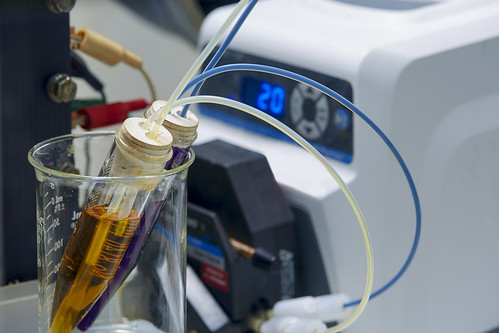
Sodium-potassium alloy is a room-temperature liquid metal that could unlock a high-voltage flow battery. (Image credit: Antonio Baclig)
A new type of flow battery that involves a liquid metal more than doubled the maximum voltage of conventional flow batteries and could lead to affordable storage of renewable power. A new combination of materials developed by Stanford researchers may aid in developing a rechargeable battery able to store the large amounts of renewable power created through wind or solar sources. With further development, the new technology could deliver energy to the electric grid quickly, cost effectively and at normal ambient temperatures.
The technology – a type of battery known as a flow battery – has long been considered as a likely candidate for storing intermittent ...
Read More







Recent Comments